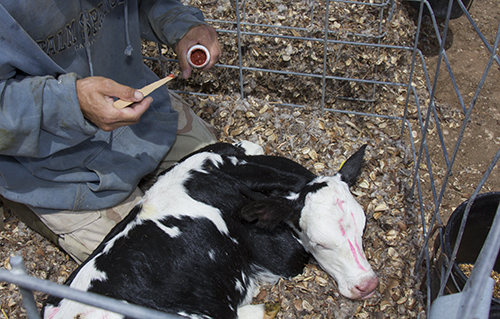
Unless they are born polled, all dairy cattle will grow horns. The horn bud attaches to the bone sometime between the first and second month of a calf's life. For that reason, the earlier disbudding or dehorning can be done, the less invasive it is and the less painful it may be.
Horn removal is a necessary practice on farms, for the safety of both animals and people. Preliminary results from a field survey conducted by the University of Wisconsin-Extension found that, of the 78 participating farms, 49 percent dehorned calves in some way before 8 weeks of age, and another 28 percent used the caustic paste method at a very young age. The person doing the procedure was trained by the veterinarian on 60 percent of the farms.
The administration of pain medication prior to dehorning is becoming more widely recommended. Of the farms surveyed, 18 percent were currently using some form of pain control before dehorning. Once again, veterinarians were very involved with this decision, as 81 percent of the producers started using pain medicine after a discussion with their veterinarian. Of the farms not using pain control measures, 26 percent indicated a lack of understanding as the reason why.
As mentioned earlier, calves that are polled do not need to be dehorned. While the number of polled sires currently available is somewhat limited, polled genetics are gaining interest. Eighteen percent of the farms in this Wisconsin study were currently using some polled genetics, and 27 percent were interested in learning more.
While dehorning methods and the use of pain medicine and polled genetics varied among farms, a large majority (88 percent) recognized the importance of mitigating pain during routine farm procedures and are concerned with the public's view of dehorning. As a result, about half of the respondents said they were considering a change to their disbudding or dehorning process in the future.








